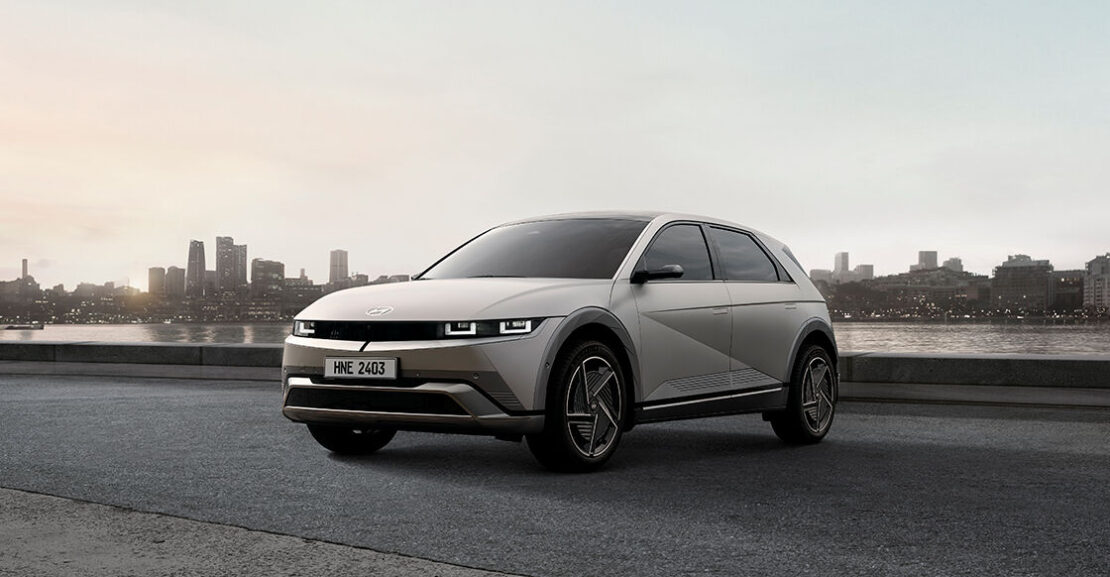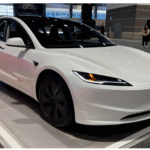Electric vehicles are one of the few tech innovations that have faced more doubt than enthusiasm. On the contrary, electric vehicles promise a cleaner environment, less use of fossil fuels, and amazing new technology that seems almost too good to be true. The only question that remains, however, is:
Are Electric Vehicles truly safe?
In this article, we’ll explore the science that makes electric cars safe and look at real world incidents and regulatory standards to answer the question in a fair, fact-based way.
While some believe EVs are flawlessly safe and others see them as dangerously unpredictable, the truth lies somewhere in between. Safety in EVs is not just about crash resistance — it also involves battery stability, fire risk, protection systems, and mechanisms for emergency response. Understanding these factors gives us a clearer picture beyond the headlines.
To begin, let’s define what “safety” really means when it comes to electric vehicles.
What Does “Safety” Mean for Electric Vehicles?
Surviving a crash isn’t the only part of safety. In electric vehicles, safety extends to multiple dimensions:
- Crashworthiness (how the car protects you in an accident)
- Fire risks (especially related to batteries)
- Cybersecurity (protection against hacking)
- Electrical system failures
- Long-term durability
Unlike traditional gas-powered cars, electric vehicles bring entirely new types of risks which must be clearly evaluated.
Crash Safety: Are Electric Vehicles More Dangerous or Safer?
Most modern Electric Vehicles do well in crash tests. The National Highway Traffic Safety Administration (NHTSA) and the Insurance Institute for Highway Safety (IIHS) have tested popular electric vehicles, which received top safety ratings.
Why? A few scientific reasons:
1) Lower Center of Gravity:
Heavy battery packs are mounted under the floor of Electric Vehicles and this gives them a lower center of gravity. That means there’s a much lower risk of rollovers and deadly accidents.
2) Reinforced Structures:
Without a big internal combustion engine in the front, electric vehicles have more room for crumple zones—specially designed areas that deform during a crash to absorb energy. These zones help reduce the force transferred to passengers. With fewer bulky engine parts in the way, EVs can absorb impact energy more efficiently, improving overall crash safety.
3) Advanced Technology:
Almost all Electric Vehicles have features such as automatic emergency braking, lane departure warnings, and blind spot monitoring.
4) Safer Electric Vehicles:
The IIHS studied that injury claims for drivers of EVs were 40 percent lower than those for similar conventional vehicles.
5) Bottom line:
Electric Vehicles are typically safer in crashes than their gasoline powered cousins.
Fire Risks: The Battery Problem
The elephant in the room: battery fires.
Of course, headlines have sensationalized that Electric Vehicles can catch fire after accidents or in parking lots. Companies like Tesla, Chevy (Bolt EV) and Hyundai have reported battery related recalls.
But here’s the scientific reality:
Electric vehicles are much less likely to catch fire compared to traditional gasoline cars.
Data from the National Fire Protection Association (NFPA) and the Bureau of Transportation Statistics show that EVs experience far fewer vehicle fires per 100,000 cars when compared to gasoline-powered vehicles.
Why the media frenzy, then?
While Electric Vehicle fires are rarer, when they do occur, they can burn much hotter and longer than gas fires because the batteries in Electric Vehicles can experience thermal runaway, a chain reaction within lithium-ion batteries.
Manufacturers’ response:
Now, companies build EV batteries with multiple layers of protection, including cooling systems, battery management software and crash resistant casing.
Conclusion:
Statistically, Electric Vehicle battery fires are much less common than gasoline vehicle fires. Though these fires can tend to be dramatic.
Cybersecurity: The Invisible Threat
Electric Vehicles have one unique challenge of cybersecurity.
As vehicles become more ‘smart’ with internet connected apps, wireless software updates and self-driving capabilities, they also become vulnerable to hacking.
Imagine this:
A hacker remotely disabling your brakes or stealing your vehicle data.
It sounds terrifying—and it is. But manufacturers are actively working to stay ahead of cyber threats by:
- Regularly updating vehicle software
- Building multiple firewalls within onboard systems
- Limiting critical functions from remote access
Governments are stepping in too. As an example, the US government’s Cybersecurity and Infrastructure Security Agency (CISA) has guidelines for automotive cybersecurity.
Is it a concern?
Yes, but the risks are being managed carefully.
https://www.nhtsa.gov/sites/nhtsa.gov/files/documents/812333_cybersecurityformodernvehicles.pdf
https://www.hoganlovells.com/en/publications/cisa-issues-autonomous-ground-vehicle-cybersecurity-guide?utm_source=chatgpt.com
Electrical Failures: Myth vs. Reality
Another common worry about Electric Vehicles is:
“What if the electronics fail while I’m driving?”
Realistically, modern Electric Vehicles have high redundancy built into their critical systems — meaning they’re designed with backup pathways and components that automatically take over if one fails. This includes dual electrical circuits, emergency shutdown mechanisms, and backup power for essential controls. For drivers, this means added peace of mind knowing that even if something goes wrong, your electric vehicle is built to keep you safe and moving. Failures are rare and no more likely than mechanical issues in gas-powered vehicles.
Scientific Innovations Improving Electric Vehicle Safety
Behind every Electric Vehicle, there’s a mountain of scientific research making them safer every year.
Some key innovations include:
1) Solid-State Batteries:
- Safer than lithium-ion, these batteries are less prone to catching fire.
2) Advanced Driver-Assistance Systems (ADAS):
- Some Electric Vehicles like Tesla’s Autopilot, Ford’s BlueCruise, or GM’s Super Cruise offer semi-autonomous driving to reduce accidents caused by human error.
3) Predictive Maintenance:
- Newer Electric Vehicles can predict and warn drivers about issues before they become dangerous.
Real-World Case Studies Regarding Electric Cars: Lessons Learned
Let’s look at some real-world events:
Tesla Model S Crash Fires
Several early Tesla Model S vehicles caught fire after hitting debris on highways. Tesla responded by adding a titanium shield under its cars to protect the battery.
Result? No similar fires have occurred since.
Chevy Bolt Recall
In 2020–2021, General Motors recalled thousands of Bolt EVs due to defective battery cells that posed a risk of fires. The company replaced the faulty battery modules and improved the battery software so it could detect potential issues early on..
Lesson? Early identification and proactive fixes are key.
Rivian R1T Nails NHTSA Crash Tests
The Rivian R1T, an all-electric pickup, crushed the 2023 NHTSA crash tests with five-star ratings in every category. Turns out, Electric Vehicles can be just as rugged — and way safer than you might expect!
Are EVs Safer Than Gasoline Cars Overall?
Taking everything into account, here’s a fair assessment:

Final Thoughts: Should You Worry About EV Safety?
If you’re considering buying an electric car, here’s the real truth:
- Crashes? Electric cars are safer.
- Fires? Electric cars are less likely to catch fire, but it’s smart to buy from reputable brands.
- Cyberattacks? Possible, but actively being fought by manufacturers and regulators.
- Longevity? Time will tell, but early results are promising.
No technology is 100% risk-free—but based on the available science, electric vehicles are among the safest vehicles ever designed.
So the next time you hear someone asking,
“Are Electric Vehicles safe?”
you’ll know the answer that they are.
Plus they’re getting even safer every year!






